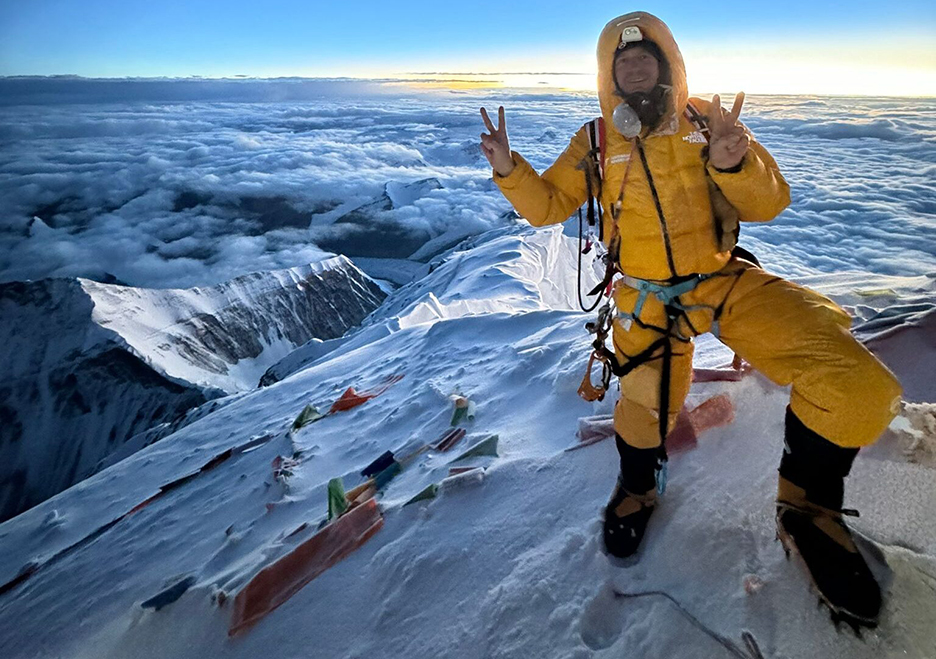A group of commercial Everest climbers plan to complete their climb in a week by chemically boosting their acclimatization and performance using a new method. They will sip xenon gas just before the climb and then push straight for the summit.
While traditional alpinists bemoan the further touristification of Everest, clients with more money than time could view the method as a perfect solution. Yet the implications go well beyond Everest.
Immediate EPO boost
Xenon, an inert gas occasionally used as an anesthetic, apparently has the side effect of radically increasing the body’s production of EPO (erythropoietin, a hormone that regulates a healthy level of red blood cells). Xenon helps red blood cells multiply without acclimatizing or injecting a synthetic version of the hormone.
A small group of Furtenbach Adventures clients plan to fly to Kathmandu this spring when forecasts announce a weather window. There, they will receive xenon therapy in a clinic before flying to Everest Base Camp for an immediate summit push. The team explained the new approach to Simon Usborne in a piece published over the weekend in the Financial Times.
The plan is to climb Everest in three days, with full oxygen and sherpa support. They have scheduled one more day for the descent.
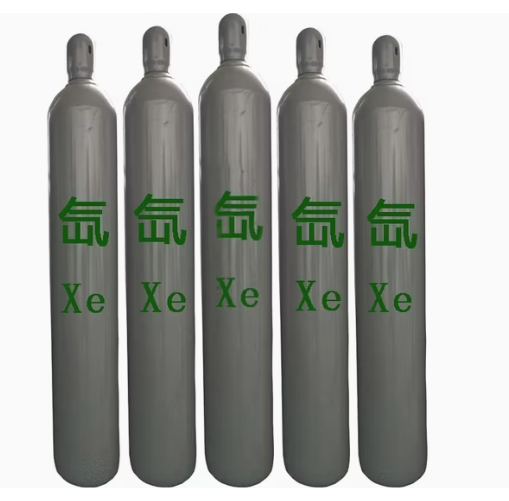
Bottles of xenon gas for medical use made in China. Photo: Ludonggas
In the name of safety
Lukas Furtenbach confirmed the plan to ExplorersWeb. As he told the Financial Times, he is prepared for a backlash from some in the mountaineering community.
Over the last few years, the Austrian guide has specialized in “flash expeditions.” These three-week climbs use hypoxic training before the trip and cutting-edge technology during the climb. Climbers are constantly monitored during the summit push.
“We do this to prevent HAPE and HACE [pulmonary and cerebral edema], like any other way of acclimatizing, not to enhance performance,” Furtenbach told us. “Ultimately, it is about increasing safety. Better acclimatization equals better altitude sickness prevention, and less exposure time on the mountain equals a safer expedition. if people are against it, they are against improving safety on the mountain.”
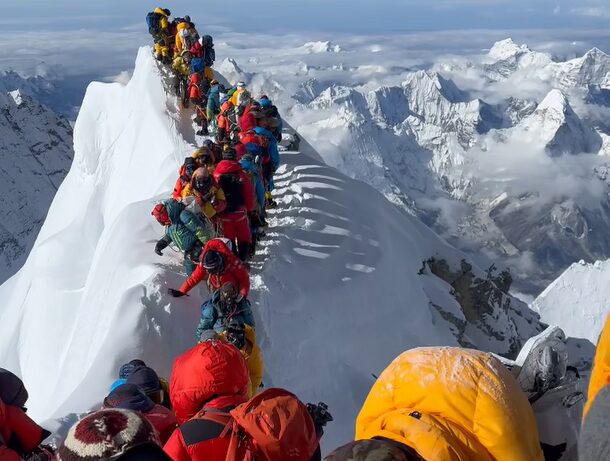
A traffic jam meters away from the summit of Everest. Image: Vanayak Malla
At high altitudes, speed is life, as climbers Inaki Ochoa de Olza and Ueli Steck used to say (before both died in mountain accidents). Additionally, the potentially lethal effects of exposure to altitude go beyond HAPE and HACE. The more time one spends at altitude, the higher the chances of frostbite, exhaustion, and mental impairment.
However, it is also true that shorter expeditions reduce costs for outfitters and appeal to a new niche of wealthy clients.
Furtenbach charges his xenon climbers $154,000. Xenon gas is extremely pricey: A 30-minute session costs $5,000 dollars per person, the Financial Times article stated.
Experimental treatment
Furtenbach became a believer in xenon therapy after using it on Aconcagua in 2000, after a suggestion from Michael Fries, a German anesthesiologist.
“A small team of us, including me, have used it for five years on different mountains,” Furtenbach told us. “Among them are Aconcagua, Everest, and Lhotse. We will start using it with clients in 2025. I am not aware of anyone else having the experience, knowledge, and technical equipment for this treatment.”
The World Anti-Doping Agency (WADA) has included xenon in its list of prohibited items in professional sports.
Adrian Ballinger, CEO of Alpenglow, is also named in the Financial Times article, since one of his clients completed a 2019 Everest trip in 14 days. Asked by ExplorersWeb, Ballinger said that they are proud of that achievement. He explained that the client used hypoxic training “but no banned performance [substances] like EPO, xenon, or even dexamethasone.”

Grace Tseng of Taiwan trains in a hypobaric chamber. Photo: Grace Tseng/Instagram
Not an organized sport
“I don’t use such drugs as a professional climber, and I hold my clients to the same standards,” Ballinger said.
But for Furtenbach, the concept of doping is not applicable to high-altitude mountaineering.
“It’s not an organized sport, so there’s technically no doping in mountaineering,” Furtenbach told the Financial Times.
Ballinger, on the other hand, believes that mountaineering should keep the same no-doping standards as other endurance sports like cycling or trail running.
“There is also a safety issue. Banned substances like EPO involve risks, and with the limited rescue resources on the upper sections of Everest, that risk becomes huge. [With xenon,] it’s like running a scientific experiment with clients, which makes pretty interesting decision-making for a guide,” Ballinger said.
But Furtenbach defended xenon’s record to ExplorersWeb: “This gas has been used in anesthesia for more than 40 years. Countless studies show that it has no negative side effects, even with much higher doses than we are applying.”
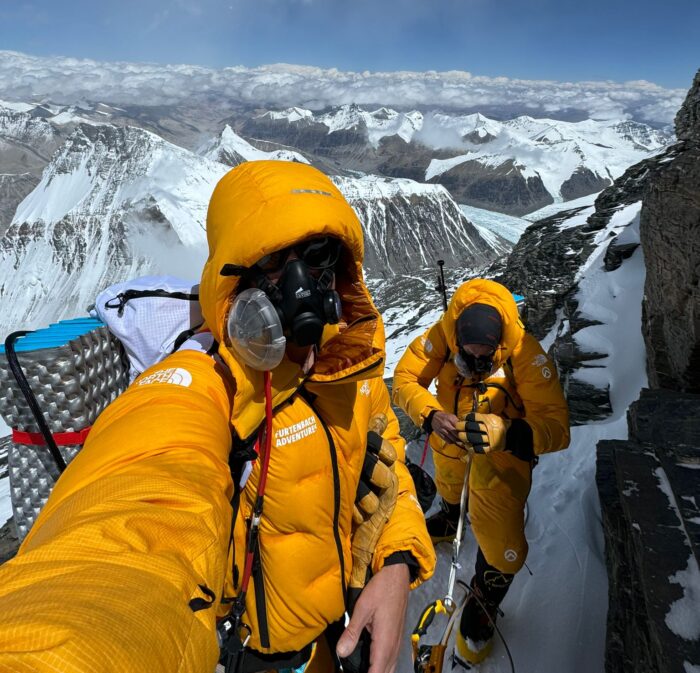
Climbers on the so-called ‘Sidewalk Traverse’ at 8,000m on the way to Camp 3 on the North Side of Everest. Photo: Lukas Furtenbach
As for the Kathmandu clinic where the treatment will be supplied, Furtenbach said the location varies, but it will always provide a full clinical setup.
WADA rules
According to WADA, a substance needs to meet two of the following three criteria to be added to the list of prohibited substances:
- It has the potential to enhance performance
- It represents an actual or potential health risk to the athletes
- It violates the spirit of sport
WADA specifically prohibits the use of erythropoietin-receptor antagonists like EPO and variants, and hypoxia-inducible factor (HIF) activating agents, such as xenon and some others. You can check the information and a list updated weeks ago here.
Reactions in the community
Other Everest expedition leaders contacted by ExplorersWeb were unaware of the xenon treatments.
“We had no news about the issue,” admitted Pemba Sherpa of 8K Expeditions in Nepal.
Garret Madison of the U.S. was also “personally shocked” after reading the article. “I don’t offer performance-enhancing drugs to my clients,” he said.
U.S. blogger Alan Arnette, who climbed Everest in 2011 on Madison’s team, shares his opinion against fast expeditions and favors instead to “celebrate the journey, not just the outcome [and embrace] the spirit of expedition climbing.”
However, the evolution of commercial climbing in higher mountains has clearly shown that the trend is to focus entirely on the summit and to reach it as fast, safely, and comfortably as possible.
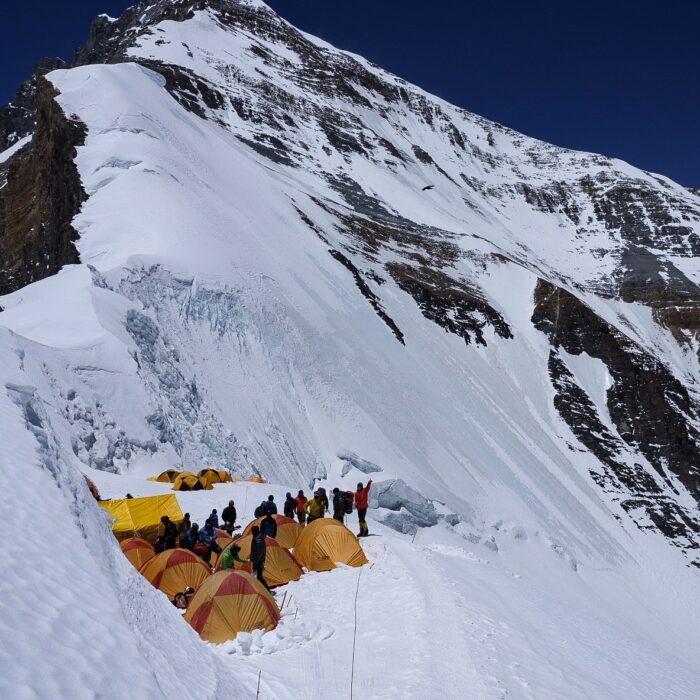
Camp 4 on the Lhotse Face. Photo: Furtenbach Adventures
While alpinists think of adventure when imagining a trip to the Himalaya, upscale 21st-century clients want to eliminate adventure from the equation. They are willing to pay hefty sums to remove any uncertainty.
In that sense, some may perceive that using xenon to speed up a climb is just another tool used by the blossoming industry of high-altitude commercial climbing. But is it?
The future
Whether the use of xenon proves safe and eventually becomes standard procedure on Everest, only time will tell. For the time being, what we know of xenon therapy in sports is what WADA says: It is a banned, performance-enhancing method.
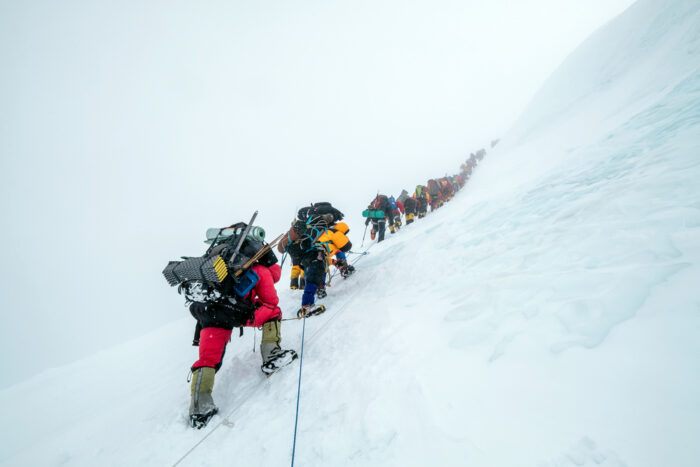
Sherpas and foreign climbers on fixed ropes. Photo: Shutterstock
The story about xenon is just another chapter in a series of controversies around Everest and the commercialized 8,000’ers that reveal a problem well beyond whether a particular climber uses a particular substance. It is the overall perception that only summits and records matter rather than the experience — the long trek in, the endless waits in camp for the weather to clear, the camaraderie that builds up, and yes, even the failures.
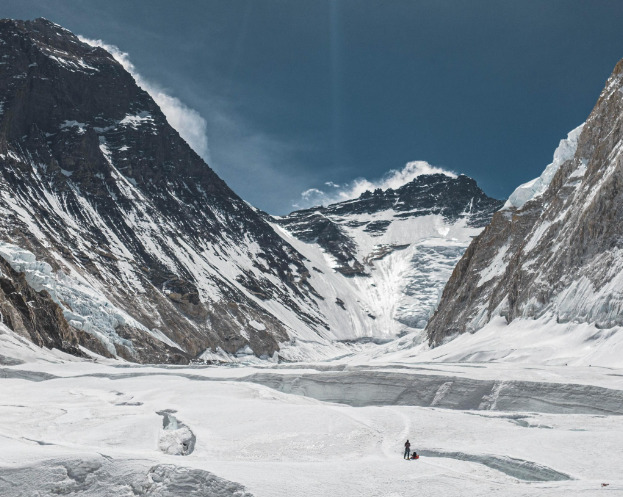
Everest, left, and Lhotse from above the Western Cwm. Photo: Seven Summit Treks
